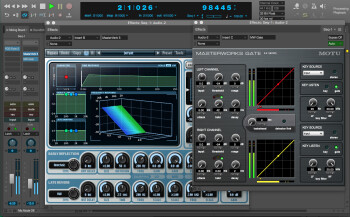In this new episode we'll address the strange marriage between reverbs and gates.
Clean and groovy

Who and when invented this technique? I have no clue. What I do know, however, is that people around 40-ish, like me, and older, certainly recall the excessive use of gated reverbs everywhere back in the '80s. Just take a listen to Phil Collins’ drums…
Putting aside the hype back then, there’s no doubt that placing a gate at the output of a reverb has proven a very useful trick, if done subtly and with taste. But, what is it good for? It’s very simple: If a mix is relatively full, a very long reverb queue can blur things a bit, “biting into” some notes. The natural reflex when you notice that is to shorten the decay, so that the reverb of one note doesn’t mask the next note. The problem is that this completely changes the color and/or sense of space created by the original reverb. What can you do then? Well, add a gate to literally cut off the end of the reverb queue before it starts messing things up.
And you don’t need to be a genius to achieve that. You only need to set fast attack and release times, the range parameter to maximum, and the threshold low enough so that the gate opens with the early reflections. But the most important parameter here is the Hold time. In fact, it’s this parameter that determines how long the natural decay of the reverb will be preserved. So you need to pay special attention to it in order to respect as much as possible the groove of the instrument feeding the reverb.
As you’ve probably figured out, this technique is especially useful for percussive instruments. But it can also be interesting on non-rhythmic instruments. It can actually infuse some groove into them if you have carefully set the Hold parameter to follow the groove of the music. It’s up to you to decide if you want to exaggerate to achieve a “special” effect or rather go soft on it to give the impression of a vaguely swinging rhythm.
One last remark before I finish. This technique has become so popular that some reverb plug-ins even provide a “Gated Reverb” preset. While pretty handy, they don’t offer the same flexibility and experimenting possibilities as an actual gate inserted directly at the output of the reverb. It’s your call…
In the next installment we’ll continue analyzing the partnerships between dynamics processing and reverb with the focus on compression.
